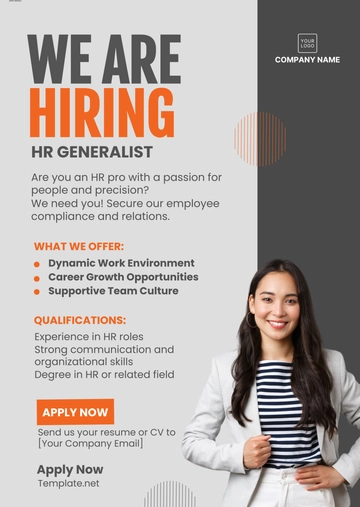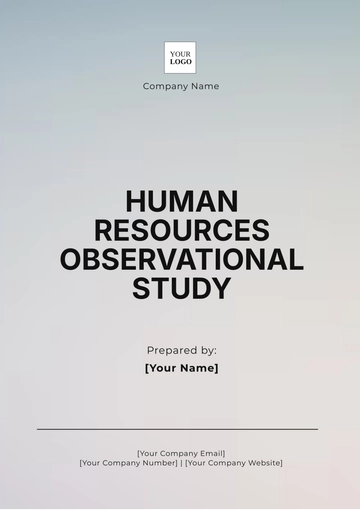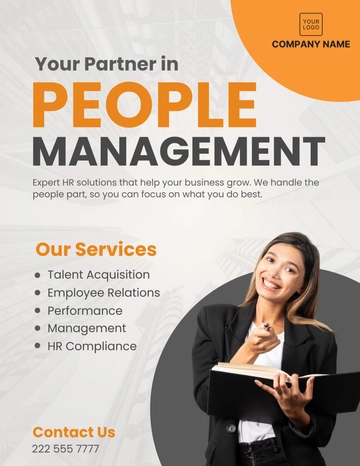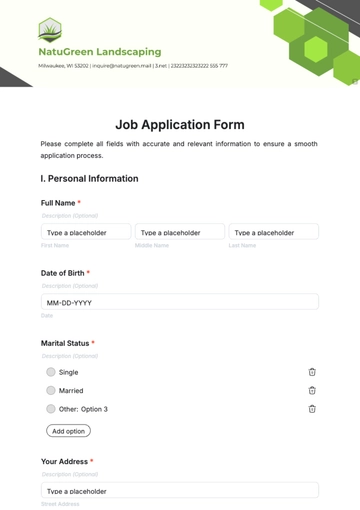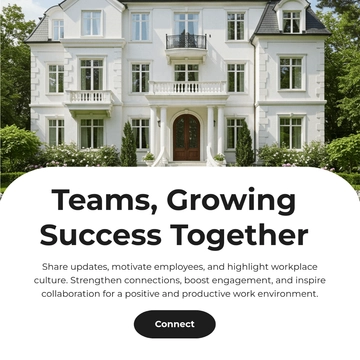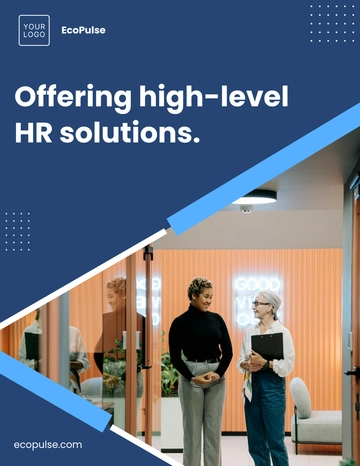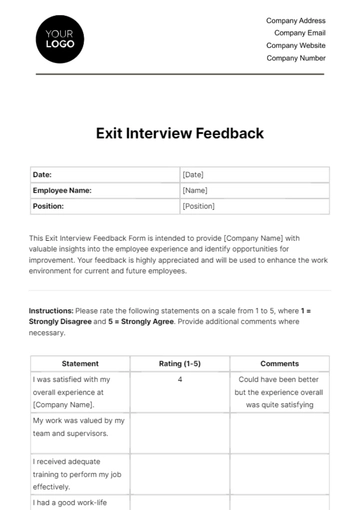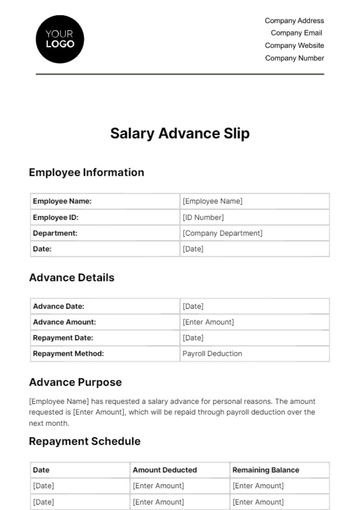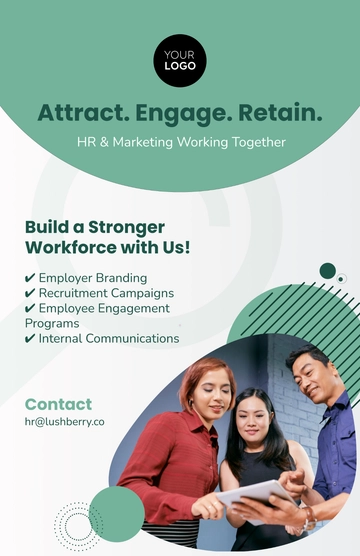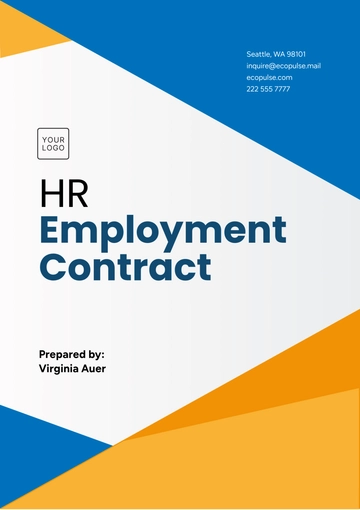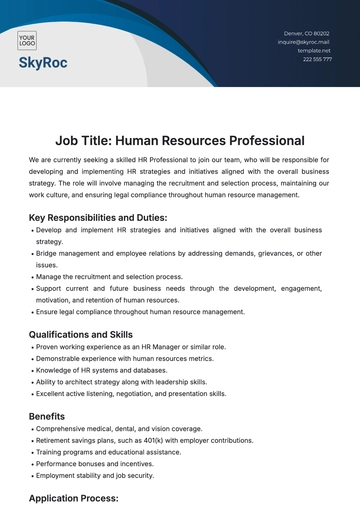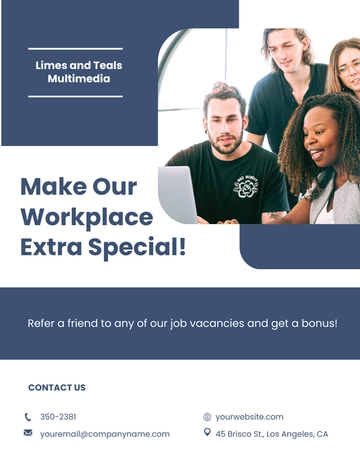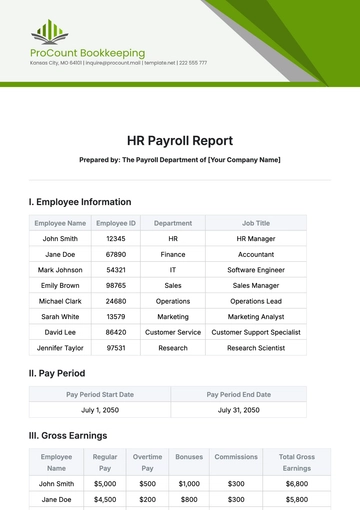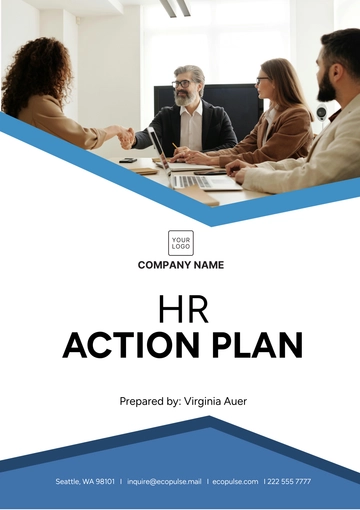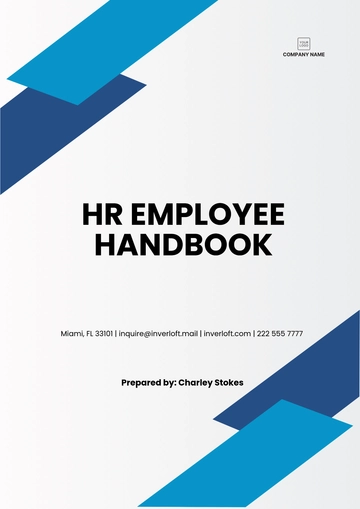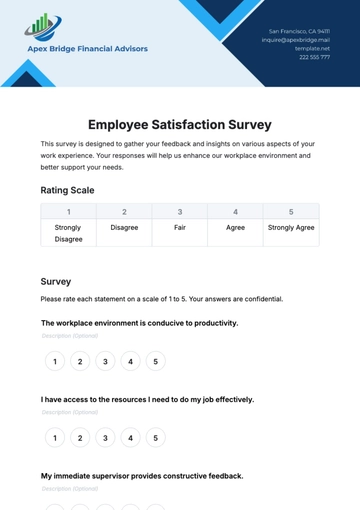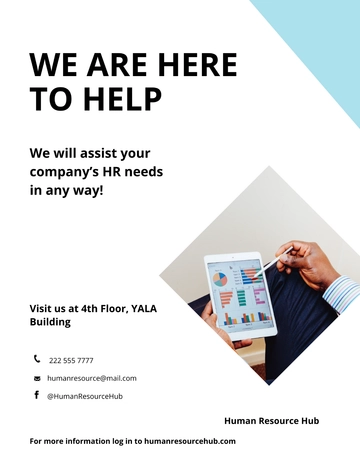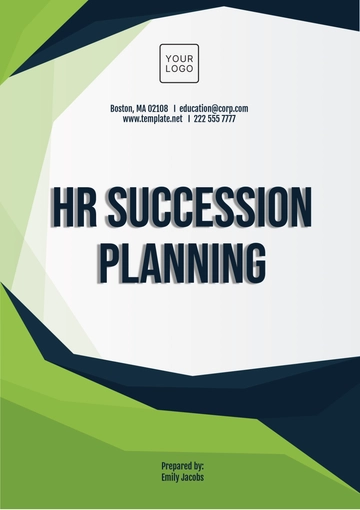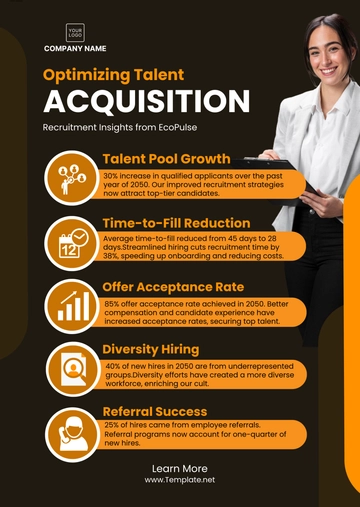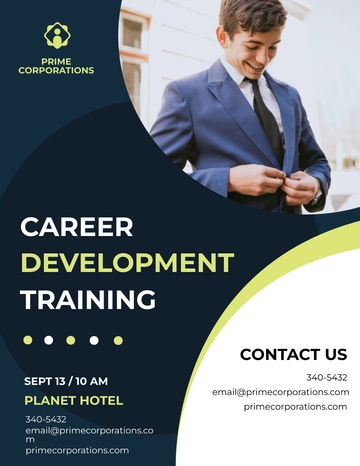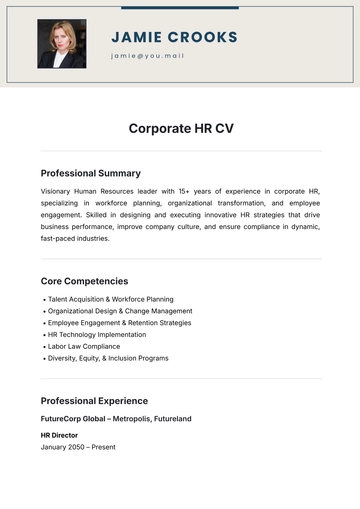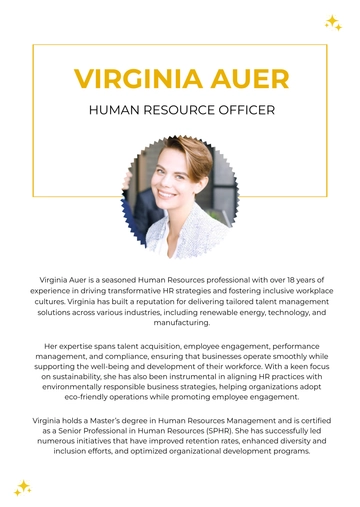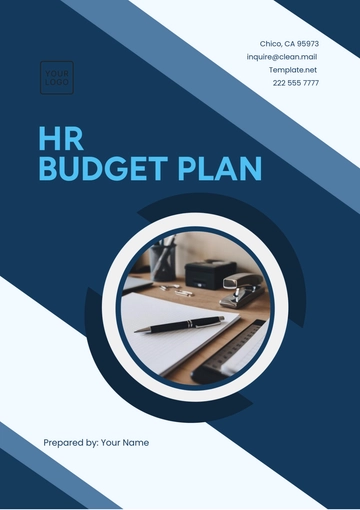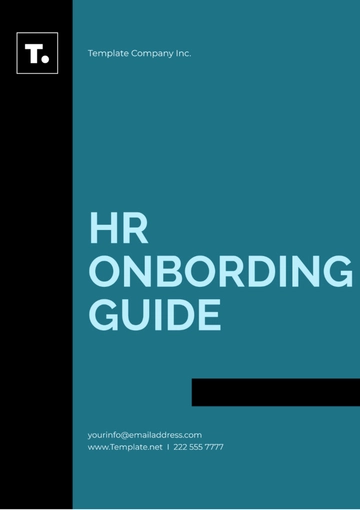Free HR Strategy
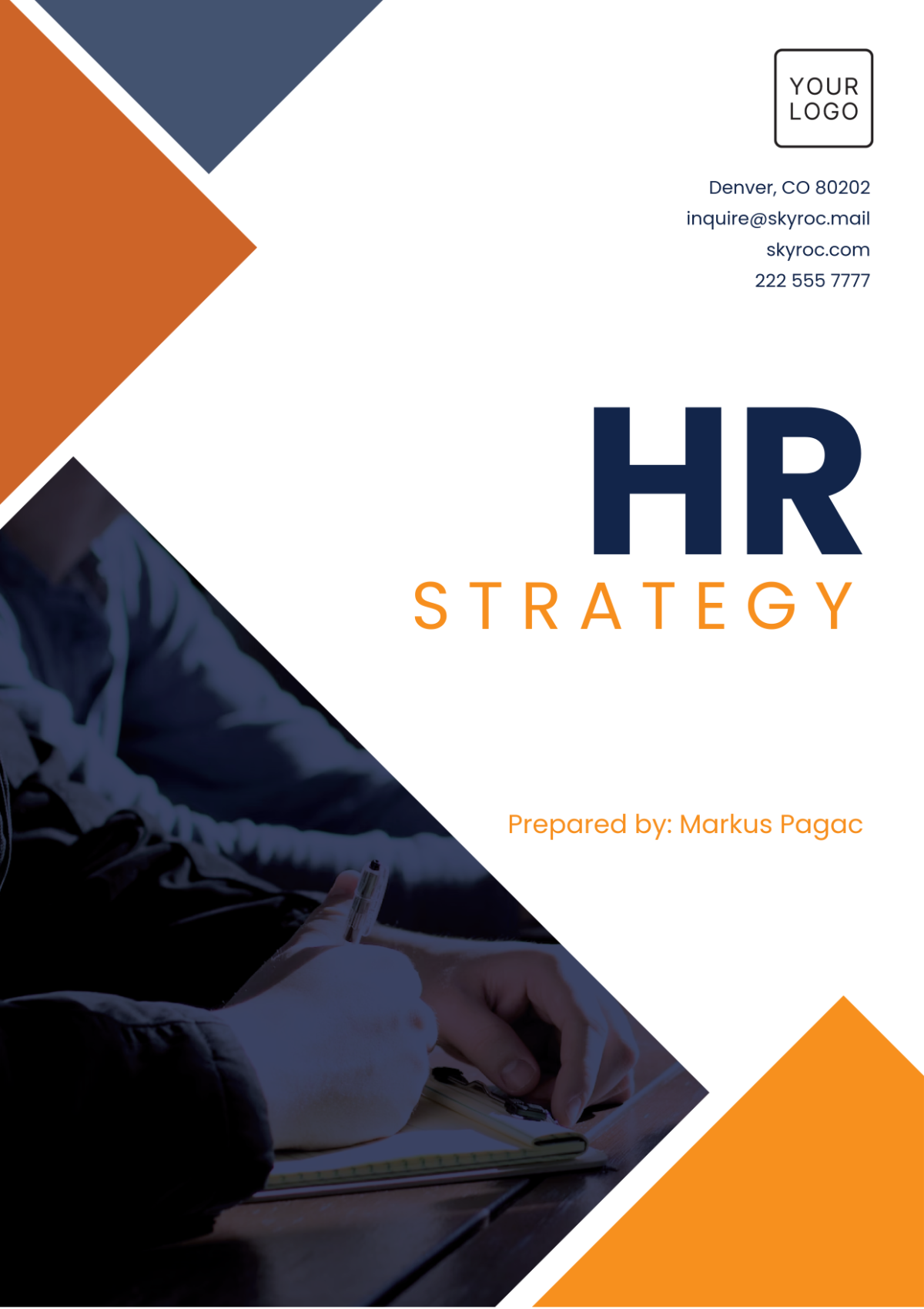
I. Executive Summary
A. Overview of the HR Strategic Plan
The Human Resources (HR) Strategic Plan for [Your Company Name] outlines our strategic approach to managing our most valuable asset: our people. As we approach the year 2050 and beyond, this plan focuses on aligning HR initiatives with the company’s long-term business goals. It emphasizes creating a work environment that fosters innovation, enhances employee engagement, and supports diversity and inclusion. This document serves as a roadmap for the next five years, ensuring that [Your Company Name] continues to attract, develop, and retain top talent.
B. Objectives
The primary objectives of this HR Strategic Plan include:
Talent Acquisition and Retention: Develop strategies to attract and retain top-tier talent by enhancing the recruitment process and offering competitive compensation and benefits packages.
Employee Development: Implement comprehensive training and development programs to ensure continuous employee growth and alignment with the company’s evolving needs.
Diversity and Inclusion: Promote a diverse and inclusive workplace where all employees feel valued and respected, contributing to a culture of innovation and collaboration.
Performance Management: Enhance performance management systems to ensure clear communication of expectations, regular feedback, and recognition of achievements.
Workforce Planning: Conduct proactive workforce planning to anticipate future skill needs and ensure the company is prepared for changes in the market and industry.
C. Key Performance Indicators (KPIs)
To measure the success of our HR strategies, the following KPIs will be monitored:
Turnover Rate: Target a turnover rate below 10% annually by 2050.
Employee Engagement Score: Achieve an engagement score of 85% or higher in employee surveys.
Diversity Metrics: Increase the representation of underrepresented groups in leadership positions by 15% by 2055.
Training Completion Rates: Ensure 90% of employees complete mandatory training programs annually.
Time to Fill Vacancies: Reduce the average time to fill key positions to 30 days or less.
II. Talent Acquisition and Retention
A. Recruitment Strategy
Employer Branding: Enhance [Your Company Name]’s employer brand to position the company as an employer of choice by 2050. This involves creating a strong online presence, showcasing our commitment to employee well-being, and highlighting our innovative workplace culture.
Diverse Sourcing Channels: Utilize diverse sourcing channels, including job boards, social media, and professional networks, to reach a broad pool of candidates. Partner with universities and industry associations to attract emerging talent and experienced professionals.
Referral Programs: Expand the employee referral program to encourage current employees to refer top talent. Provide incentives for successful referrals and ensure a streamlined process for referral candidates.
Candidate Experience: Focus on providing a positive candidate experience throughout the recruitment process. This includes clear communication, timely feedback, and a user-friendly application process.
B. Retention Strategy
Competitive Compensation: Regularly review and adjust compensation packages to remain competitive in the market. Introduce long-term incentives such as stock options or profit-sharing to encourage employee loyalty.
Career Development: Implement career development plans tailored to individual employee aspirations. Offer opportunities for advancement within the company through internal promotions and lateral moves.
Work-Life Balance: Promote work-life balance by offering flexible working arrangements, such as remote work options, flexible hours, and generous leave policies. Support employees in managing their personal and professional lives effectively.
Employee Recognition: Establish a robust employee recognition program that acknowledges outstanding performance and contributions. This can include monthly awards, public recognition, and bonuses tied to individual and team achievements.
C. Retention Metrics
To ensure the effectiveness of our retention strategies, the following metrics will be tracked:
Voluntary Turnover Rate: Aim to maintain a voluntary turnover rate of less than 8% annually.
Retention Rate of High Performers: Target a retention rate of 95% for high-performing employees.
Employee Satisfaction Scores: Monitor employee satisfaction scores in annual surveys, aiming for an overall satisfaction score of 90% or higher.
III. Employee Development and Training
A. Training Programs
Onboarding: Develop a comprehensive onboarding program that familiarizes new hires with [Your Company Name]’s culture, values, and business objectives. The program should include orientation sessions, mentorship opportunities, and initial skills training.
Continuous Learning: Encourage continuous learning by providing access to online courses, workshops, and certification programs. Establish partnerships with educational institutions to offer advanced training in relevant fields.
Leadership Development: Launch a leadership development program to prepare high-potential employees for future leadership roles. The program will include coaching, mentorship, and rotational assignments to expose participants to various aspects of the business.
Technical Skills Training: Offer specialized technical skills training to ensure employees stay up-to-date with industry trends and technological advancements. This is particularly important in areas such as IT, engineering, and data analytics.
B. Career Pathing
Individual Development Plans (IDPs): Implement IDPs for all employees to outline their career goals and the skills and experiences needed to achieve them. Managers will work closely with employees to update and review these plans annually.
Mentorship Programs: Establish mentorship programs that pair employees with experienced mentors within the company. Mentorship will focus on career growth, leadership development, and personal development.
Succession Planning: Identify and develop successors for key leadership roles to ensure business continuity. Regularly review and update the succession plan to reflect changes in the business environment and employee aspirations.
C. Development Metrics
The success of our development programs will be evaluated using the following metrics:
Training Completion Rate: Track the percentage of employees completing required training programs annually, aiming for a 95% completion rate.
Promotion Rate: Monitor the rate of internal promotions, with a target of filling 70% of leadership roles internally by 2055.
Skill Acquisition: Measure the percentage of employees who acquire new certifications or complete advanced training, aiming for a 20% increase annually.
IV. Diversity, Equity, and Inclusion (DEI)
A. DEI Strategy
Inclusive Recruitment: Ensure that all recruitment processes are designed to attract a diverse range of candidates. This includes using inclusive language in job descriptions and ensuring diverse interview panels.
Equitable Compensation: Regularly review compensation practices to eliminate any disparities and ensure that all employees are paid fairly for their contributions, regardless of gender, race, or other factors.
Cultural Awareness: Promote cultural awareness through regular training sessions, workshops, and events that celebrate diversity. Encourage employees to share their experiences and perspectives, fostering a culture of inclusivity.
Employee Resource Groups (ERGs): Support the formation of ERGs to provide employees with a platform to connect, share experiences, and advocate for initiatives that support their communities. Ensure that these groups are well-resourced and aligned with the company’s DEI goals.
B. Measuring DEI Success
To gauge the success of our DEI initiatives, the following metrics will be used:
Representation: Track the representation of underrepresented groups at all levels of the organization, with a target of increasing diversity in leadership roles by 20% by 2055.
Pay Equity: Conduct annual pay equity audits to ensure there are no significant disparities in compensation based on gender, race, or other factors.
Employee Feedback: Regularly collect feedback on DEI initiatives through surveys and focus groups, aiming for a satisfaction score of 85% or higher among employees from diverse backgrounds.
V. Performance Management
A. Performance Evaluation
Goal Setting: Implement a goal-setting framework that aligns individual employee objectives with the company’s strategic goals. Employees will work with their managers to set SMART (Specific, Measurable, Achievable, Relevant, Time-bound) goals at the beginning of each performance cycle.
Continuous Feedback: Shift from an annual performance review model to a continuous feedback approach. This involves regular check-ins between employees and managers to discuss progress, challenges, and development opportunities.
360-Degree Feedback: Introduce 360-degree feedback as part of the performance evaluation process. This allows employees to receive feedback from peers, subordinates, and managers, providing a more comprehensive view of their performance.
Performance Improvement Plans (PIPs): Establish PIPs for employees who are not meeting performance expectations. These plans will include specific actions, timelines, and support to help employees improve their performance.
B. Recognition and Rewards
Merit-Based Increases: Tie salary increases and bonuses to performance outcomes. Employees who consistently exceed expectations will be rewarded with higher merit increases.
Non-Monetary Recognition: Introduce non-monetary recognition programs, such as public acknowledgment in company meetings, additional paid time off, and opportunities to lead high-profile projects.
Team-Based Rewards: Recognize and reward teams that achieve or exceed their collective goals. This encourages collaboration and reinforces the importance of teamwork in achieving company objectives.
C. Performance Metrics
The effectiveness of our performance management system will be measured by the following:
Employee Performance Ratings: Track the distribution of performance ratings, aiming for a balanced curve where the majority of employees meet or exceed expectations.
Recognition Frequency: Monitor the frequency of employee recognition, with a goal of recognizing outstanding performance at least once per quarter.
PIP Success Rate: Measure the success rate of employees on PIPs, targeting a 75% improvement rate.
VI. Workforce Planning and Forecasting
A. Strategic Workforce Planning
Anticipating Future Needs: Conduct regular analyses of workforce trends, industry developments, and company growth projections to anticipate future talent needs. This will involve close collaboration with business leaders to identify the skills and roles critical to achieving long-term objectives.
Scenario Planning: Develop various workforce scenarios based on potential changes in the business environment, such as technological advancements, market shifts, or regulatory changes. These scenarios will help the company prepare for different outcomes and adjust workforce strategies accordingly.
Talent Pipeline Development: Build a robust talent pipeline by identifying and nurturing internal and external candidates for key roles. This includes partnerships with educational institutions, internships, and leadership development programs.
Technology Integration: Leverage technology to enhance workforce planning efforts. This includes using predictive analytics to forecast talent needs, identify skill gaps, and optimize workforce allocation.
B. Succession Planning
Key Role Identification: Regularly identify key roles within the organization that are critical to business continuity. This includes both leadership positions and specialized technical roles.
Talent Pool Development: Develop a pool of potential successors for each key role, ensuring that these individuals receive the necessary training, experience, and exposure to prepare them for future leadership positions.
Leadership Readiness: Assess the readiness of potential successors through regular evaluations and development assessments. Provide targeted development opportunities to address any gaps in skills or experience.
Succession Metrics: Measure the effectiveness of succession planning efforts by tracking the percentage of key roles filled by internal candidates and the time taken to fill these positions.
C. Workforce Planning Metrics
The following metrics will be used to evaluate the success of our workforce planning efforts:
Internal Mobility Rate: Track the rate of internal mobility, with a target of filling 70% of open positions with internal candidates by 2055.
Skills Gap Analysis: Conduct regular skills gap analyses, aiming to close identified gaps within a year.
Talent Pipeline Strength: Monitor the strength of the talent pipeline, ensuring that at least two qualified candidates are identified for each key role.
VII. Implementation and Monitoring
A. Implementation Timeline
Phase 1: Preparation (2050-2051): This phase involves finalizing the HR Strategic Plan, gaining executive approval, and setting up the necessary infrastructure, including technology platforms and training for HR staff.
Phase 2: Rollout (2051-2052): During this phase, key initiatives such as the new recruitment strategy, DEI programs, and performance management enhancements will be launched. Communication plans will be executed to ensure all employees are aware of the changes and understand their roles in the process.
Phase 3: Continuous Improvement (2053-2055): The final phase focuses on continuous monitoring and refinement of the HR strategies. Feedback will be collected from employees and managers, and adjustments will be made to improve the effectiveness of each initiative.
B. Monitoring and Evaluation
Regular Reviews: Conduct quarterly reviews to assess the progress of HR initiatives against the objectives outlined in this plan. These reviews will involve key stakeholders, including HR leaders, business unit heads, and representatives from employee groups.
Feedback Mechanisms: Implement robust feedback mechanisms, including surveys, focus groups, and suggestion boxes, to gather input from employees at all levels. This feedback will be used to make necessary adjustments to the HR Strategic Plan.
Annual Reporting: Prepare an annual HR report that highlights key achievements, challenges, and areas for improvement. This report will be shared with the executive team and used to inform future HR planning efforts.
KPI Tracking: Continuously track the KPIs identified in each section of this plan. Regular reporting on these KPIs will help ensure that [Your Company Name] stays on track to meet its HR objectives.
VIII. Conclusion
The HR Strategic Plan for [Your Company Name] is designed to equip the company with the human capital needed to thrive in the dynamic business environment of 2050 and beyond. By focusing on talent acquisition and retention, employee development, diversity and inclusion, performance management, and workforce planning, [Your Company Name] is committed to building a workforce that is not only highly skilled but also engaged, diverse, and aligned with the company’s strategic goals. Through careful implementation and continuous monitoring, this plan will help ensure that [Your Company Name] remains competitive and achieves long-term success.
- 100% Customizable, free editor
- Access 1 Million+ Templates, photo’s & graphics
- Download or share as a template
- Click and replace photos, graphics, text, backgrounds
- Resize, crop, AI write & more
- Access advanced editor
Craft a comprehensive HR strategy with the HR Strategy Template available on Template.net. This editable template provides a framework for developing and executing effective HR plans. Editable in our AI Editor Tool, it’s designed to align HR activities with organizational goals. Download now and build your HR strategy!
